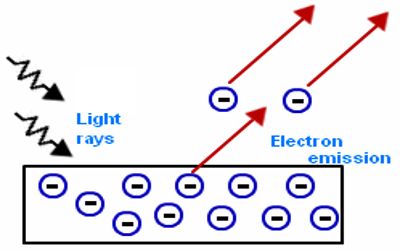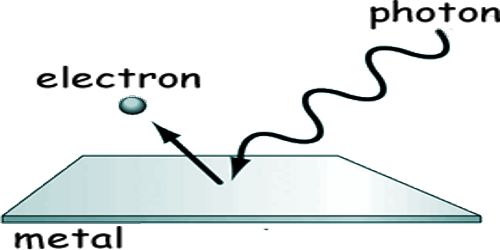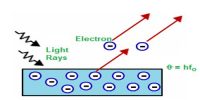Photo Electric Effect
If electricity would have been generated by the light rays falling in midday on the roof of a house made of tin, just imagine what would have happened! The phenomenon of photoelectric effect is just like this. Now we will know about it. The photoelectric effect was first observed in 1887 by Heinrich Hertz during experiments with a spark-gap generator (the earliest form of radio receiver).
The photoelectric effect refers to the emission, or ejection, of electrons from the surface of, generally, a metal in response to incident light. From experiments, it has been found that when visible light is incident on a metal surface or when any other electromagnetic wave is incident on a material, then electrons are emitted from that material. Electrons are emitted from the metal surface as long as the rays of light are incident on it. These emitted electrons from the metals are called photo-electrons. The emission of electrons from the metal due to the influence of light is called photo-electric emission and this process is called photo-electric effect. Electricity which is produced due to the flow of the emitted electrons is called photo-electricity and the current which flows is called photo-electric current. When visible light is incident on alkaline materials like sodium, potassium, cesium, lithium, rubidium etc., more photoelectrons are emitted. That means alkaline materials have a higher sensitivity of photoelectricity. Of course, all metals exhibit photoelectric effect due to the influence of X-rays or gamma rays. The following definition of photoelectricity can be given.

Fig: Photo-Electric Effect
When the light of appropriate frequency or wavelength is incident on a metal, then electrons are emitted from that metal. This process of emission of electrons is called photoelectric emission and the effect is called photoelectric effect. The electrons emitted due to the influence of light are called photoelectrons and current produced due to the emission of electrons is called photoelectric current. The photoelectric effect is perhaps the most direct and convincing evidence of the existence of photons and the ‘corpuscular’ nature of light and electromagnetic radiation.













